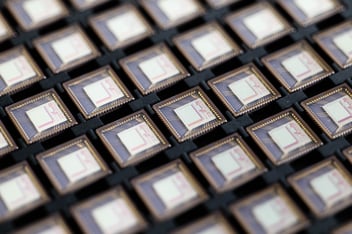The Future of CMOS X-Ray Technology
The X-ray was first discovered by accident in 1895 when Professor Wilhelm Röntgen was experimenting with electron beams. X-ray technology was employed almost immediately following its discovery to diagnose broken bones, monitor teeth health, detect foreign objects within patients, and even at shoe stores (this was found to be dangerous and was discontinued).
Without a doubt, one of the most valuable medical inventions in modern history is the X-ray machine. Although most people’s knowledge stems from breaking a bone as a child or the occasional dental visit, X-ray technology has gone on to save countless lives all while remaining a fast and non-invasive procedure.
Despite the X-ray’s irreplaceable use in medical practices, there are dangers associated with the technology. X-ray radiation is absorbed within the body, which can lead to damage of sensitive molecular structures at higher doses. Studies show that increased exposure to radiation increases a patient’s risk of developing cancer or other tissue damage. Although modern X-ray technology has come a long way to lessen the risk of developing cancers by lowering radiation dosage, there are always improvements to be made.
.jpg?width=450&height=541&name=pexels-pixabay-207496%20(1).jpg) Reducing radiation exposure while maintaining high fidelity imaging is important for risk mitigation and is imperative for the future of X-ray technology.
Reducing radiation exposure while maintaining high fidelity imaging is important for risk mitigation and is imperative for the future of X-ray technology.
At SeeDevice, innovators of the quantum-based image sensor, we believe our QMOS™ (Quantum effect CMOS) technology can advance X-ray technology. Our approach aims at adapting our SWIR (Short-Wave Infrared) sensor to accurately detect X-ray wavelengths at a sensitivity high enough to ultimately require a lower dosage of radiation per image.
Presently, our QMOS™ sensor can achieve ultra-high SWIR sensitivity and performance all while maintaining lower costs to manufacture due to our pure silicon construction. This allows us to outprice competition that still utilize legacy InGaAs and Germanium while also maintaining competitive performance.
Across the biomedical industry, SeeDevice aims to bring affordable, accurate solutions to patients around the world. Currently, SeeDevice is in the prototype stage of an optics based, non-invasive continuous glucose monitoring system, which would bring affordable glucose monitoring to hundreds of millions of diabetic patients worldwide.

.png?width=352&name=chip%20grid%20photo%20edited%20for%20banner%20-%20Copy%20(2).png)

